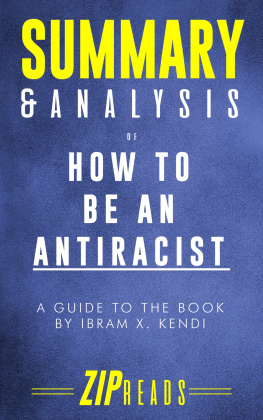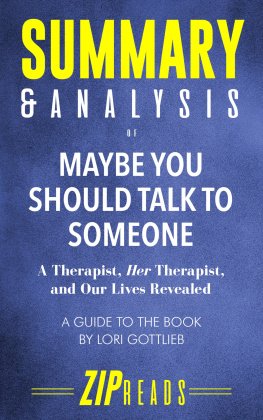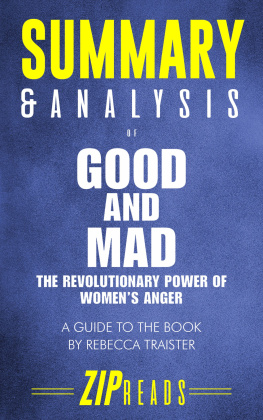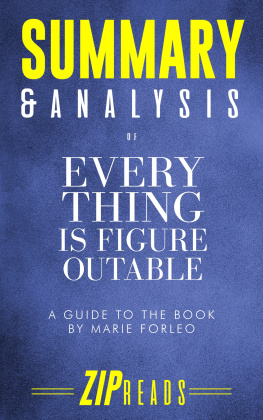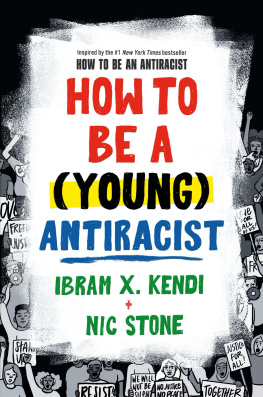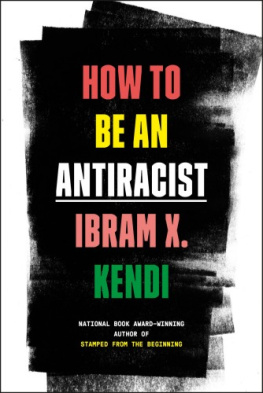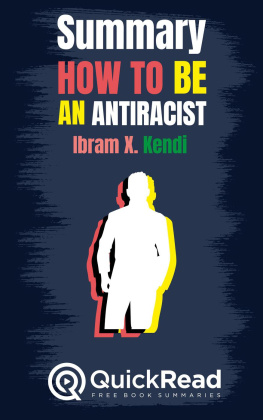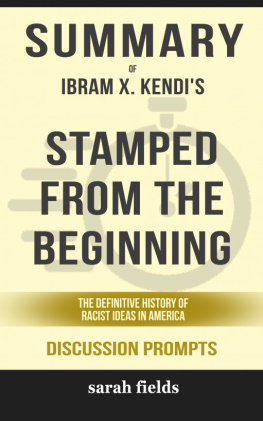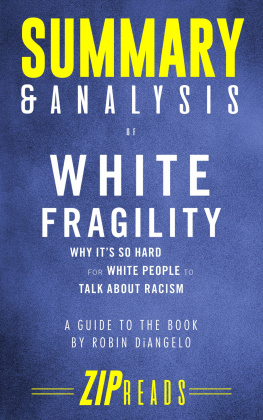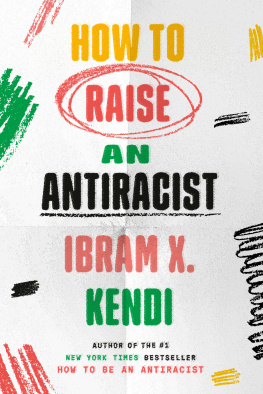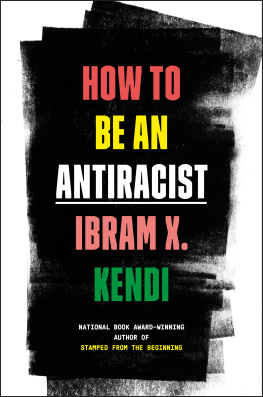
NOTE: This book is a summary and analysis and is meant as a companion to, not a replacement for, the original book.
Please follow this link to purchase a copy of the original book: https://amzn.to/2OLWZEa
Copyright 2019 by ZIP Reads. All rights reserved. This book or parts thereof may not be reproduced in any form, stored in any retrieval system, or transmitted in any form by any meanselectronic, mechanical, photocopy, recording, or otherwisewithout prior written permission of the publisher, except as provided by United States of America copyright law. This book is intended as a companion to, not a replacement for the original book. ZIP Reads is wholly responsible for this content and is not associated with the original author in any way.
TABLE OF CONTENTS
SYNOPSIS
Kendi presents ideas on how to be an antiracist, laying down the social definitions for a modern discourse on racism and inequality.
Eighteen chapters craft careful focus on each part of our racial indoctrination over the centuries, especially in America. He aims to liberate the world into conscious antiracism and a genuine acceptance of other human beings as equals.
Definitions, examples, historical references, and relevant legal cases are cited in relation to each section. The punchy lecture-style narrative unpacks every aspect of racism, including the intersectionality of capitalism, homophobia, patriarchy, and misguided integrationist policies.
Chapters One and Two explore racism and antiracism, which have been supported by ideas, policies, and people. Dueling consciousness is the idea of a war within us between segregation, assimilation, and antiracism. An African American strives to be acceptable as an American, for example, by assimilating to the Whiteness of the brand, but they know they are Black and feel ineligible in the same breath.
Chapters Three through Eight highlight the areas where racism is most ingrained: power, biology, ethnicity, body, culture, and behavior in society. It calls out euphemisms, clarifies complacent language, and offers detailed explanations about why our racist ideas are rooted in policies rather than in people.
Chapters Nine through Eleven delve into Black and White constructs, and the rise of Lightness as a secondary form of racism prevalent in our society. They emphasize that we ALL have power to implement antiracist policies and ideas, or to perpetuate racism.
Chapters Twelve through Fifteen discusse inequality, including in classism, gender racism, segregation, and sexuality. These chapters delve into the sordid relationship between racism and capitalism, which has kept millions trapped in poverty and oppression.
Chapters Sixteen through Eighteen conclude with the failures and successes of activism among aspiring antiracists. The final metaphor of racism as a six-hundred-year-old cancer caught early strikes the universal call to action on the drum of antiracism.
CHAPTER SUMMARIES & KEY TAKEAWAYS
CHAPTER 1: Definitions
The first chapter launches into the history of Kendis own struggle to define his beliefs around racism and antiracism.
Key Takeaway: Kendis parents, Larry and Carol, were heavily influenced by InterVarsitys Urbana 1970 in Illinois.
Carol was a student and Larry was a little older. Both were ignited by the idea of Black liberation through a series of events that began at Urbana 70. They were drawn to the creed of Black empowerment and freedom separately, and it would form the foundation of their relationship later.
As we define racism in the world, it becomes confusing to implement antiracism. Mostly, it is difficult to kick against the tide of how the United States (and White Supremacy in general) has shaped our views and our dialogue.
Key Takeaway: Definitions of racism.
To aim for antiracist goals consistently, we each need to consider our lucid definitions of:
- Racism vs. antiracism
- Racist vs. antiracist policies, ideas, and people
Racial inequality is the right place to start when forming these important definitions. It means that two or more racial groups are not standing on approximately equal footing. This inequality is created or supported by racial policies; whereas antiracist policies create or support equality.
Racial policy is a more powerful tool to describe the state of things, more definite than soft terms like institutional racism and more focused than the commonly used racial discrimination. Referring to it as a policy provides clarity because racial discrimination can be an antiracist action if it promotes equality, for example.
Racist ideas suggest that one racial group is inferior to another and claim that inequity is a result of these inferiorities. Antiracist ideas are not neutral, but opposed to this notion, claiming that racist policies are the cause of the differences.
Antiracism, then, is made up of antiracist policies that lead to racial equity, and which are supported by antiracist ideas.
Chapter 2: Dueling Consciousness
The dueling consciousness is one which is torn between the segregationist, assimilationist, and antiracist pulls on our racial power.
Key Takeaway: True antiracism is a breakaway from assimilationism.
To assimilate is to grow into the desired or instructed form. For the Black American population, they have been instructed to assimilate into the American defined by the Whiteness of the nations roots. When they do, they are still rejected, and historical racial tension rises once more.
Assimilation is racist. It assumes that the one race is inferior to the other, even if it surmises that the inferior race can pull itself up by its bootstraps and meet the required standards of the superior people group. It still calls the other race inferior, which is racist.
Antiracism assumes that they are already civilized, already equal, already equated to every other people group in every way, even if they are different. This is the freedom that we all need to seek to escape our assimilationist mindsets. We dont all want to be like Whites, we are all already of equal value; we just need to be given the same opportunities, expectations, and recognition.
CHAPTER 3: Power
Kendis parents were shocked at his outburst in an interview at a potential new school. As a seven-year-old he demanded to know why the teacher was the only black employee at the school. He felt his black identity deeply and was just beginning to grasp the dueling consciousness of his race.
Key Takeaway: Race is a construct, but it is a mirage that has shaped lives for centuries.
The chapter goes into detail about the history of racializing first beginning with the biography of Prince Henry the Navigator of Portugal in the 1400s. Gomes de Zurara, the royal chronicler, composed it full of justification about the Princes slave trading pursuits. He linked people into one group of unlikeable, unintelligent, inferior people, successfully forming the first idea of a racea distinction to class people into levels of importance or power.
The idea was continued for centuries, even as President Trump sought to implement more racist policies in 2018. Why? Self-interest.
To avoid race is to deny that the inequalities exist, and this is not helpful in the conversation to uncover bias and hypocrisy backed by hidden racist policies. We cannot blame race, and we cannot deny it has an affect on those within and without the classification.
Next page
